Researching with Purpose in Urabá, Colombia pt.3
Besides screening our films for participants, touring them within the country is also a valuable part of the research process. From an international perspective Columbia or Brazil might appear as a single nation, but of course they are made up of different states, each with their own geographies, climates and music cultures. Great distances and travel times can contribute to consolidate a center – periphery hierarchy, even within a state as with Antioquia in which Urabá is located – this might be news for those living in the state capital of Medellín. At the same time, many in Barranquilla or Cartagena might not be aware that Urabá is actually part of the same Colombian Caribbean coast. Hence the value of the Playing with Purpose film tour – and music for connecting people.
by Brian D’Aquino
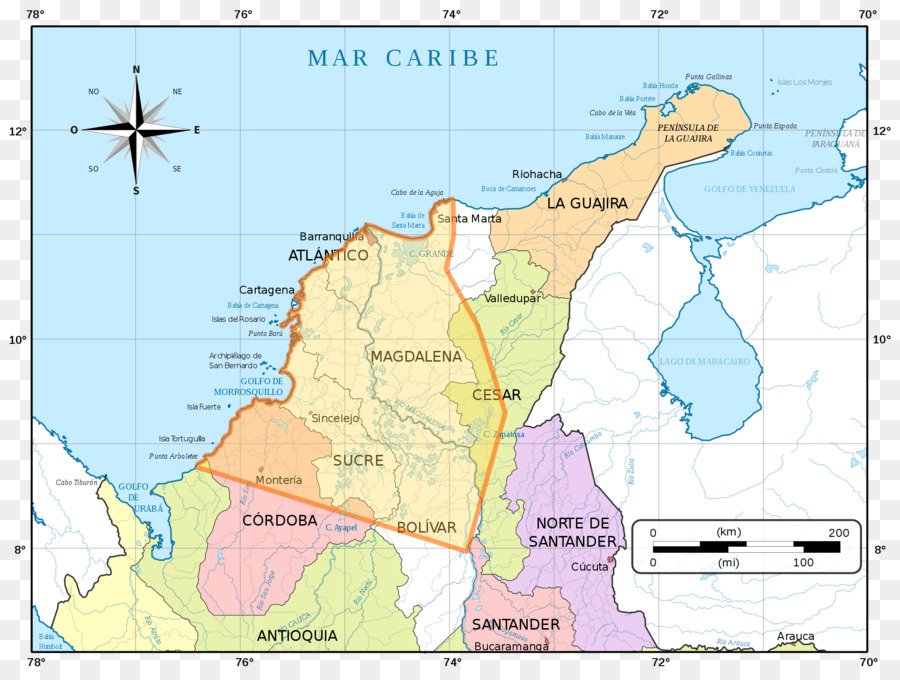
Map of Colombian Caribbean coast. Source: Web
Regions and Nations
“Urabá es Caribe” (Urabá is Caribbean). Against any expectation, this is the most recurring sentence I’ve heard during the second week spent screening the SST research documentary Playing with Purpose in different cities in Colombia. Either an answer, a question, or an acknowledgement, this sentence inevitably punctuated the discussion in Medellín, Barranquilla and Cartagena, allowing me, as well as the rest of the audience in the screening, to realize the rather peculiar condition of Urabá as a unique border region within Colombia.
Located in Northwestern Colombia, Urabá is indeed part of the country’s Caribbean coast – or, as Willinton Albornoz from the Urabá Sound System collective uses to say, “it is where the Caribbean begins.” The region mainly extends along the Atrato river, bordering Panama to the North via the infamous Darien Gap and providing mainland connection in between the Pacific and the Atlantic oceans. Despite a rather consistent history and culture, Urabá is not a single political entity. The portion that currently goes by the name of Urabá Antioqueno, where the region’s sound system capital Turbo is located, was annexed to the Department of Antioquia in the early 20th century.
With Medellín as capital, Antioquia is an inland, mountainous, and predominantly white and latino-populated department with a consolidated culture, strong family bonds and an economy traditionally centered around commerce and coffee cultivation – commonly referred to as paisa. Quite different from Urabá ’s stifling weather, lush vegetation, and predominant Black and indigenous culture. Too Caribbean to be Antioquia, and too Antioqueño to be Caribe, Urabá’s isolation has been further exacerbated by the impact of the armed conflict, with the region being one of the most tragically affected battlegrounds in the 1990s and 2000s.
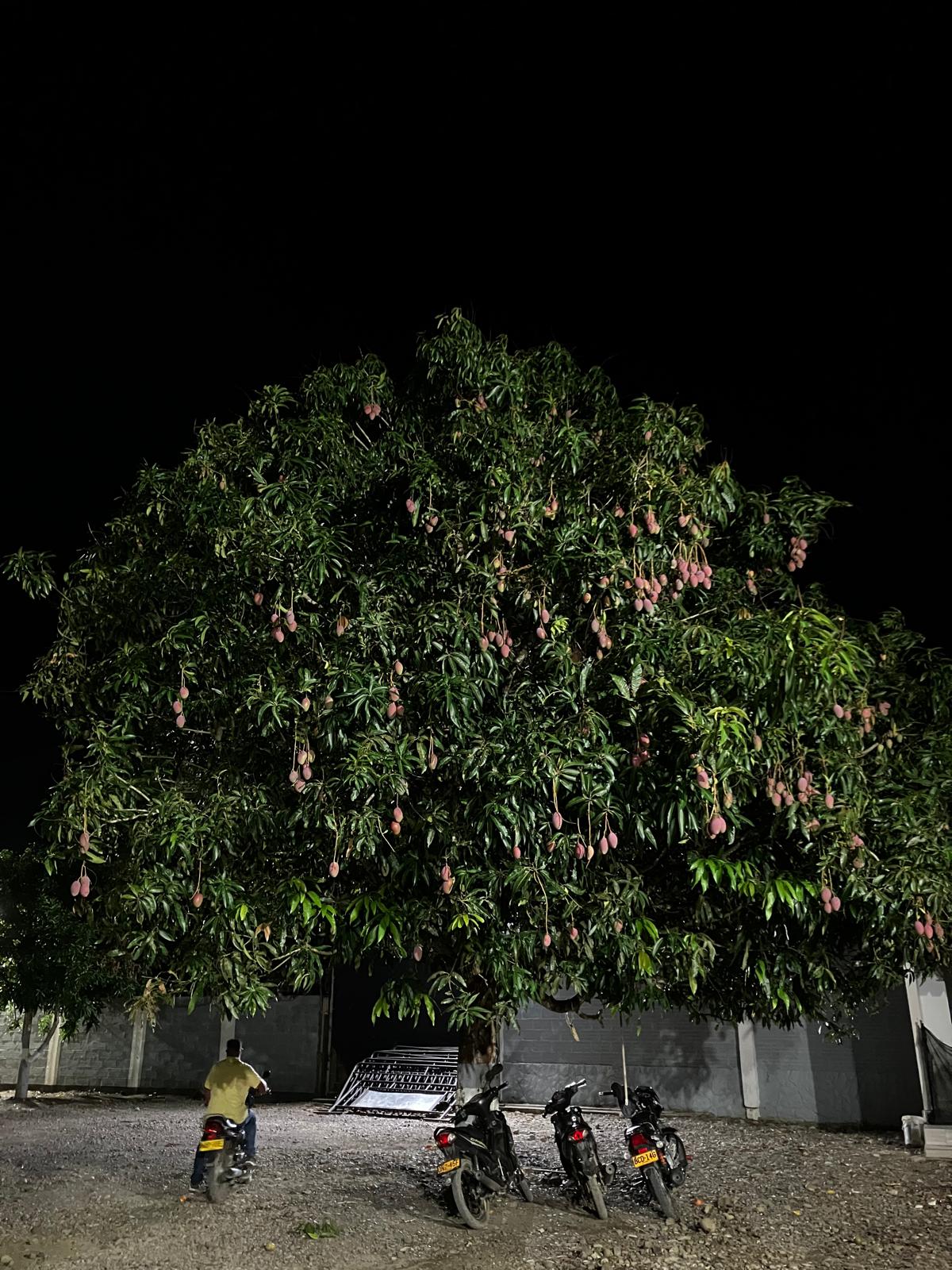
A beautiful mango tree in a dancehall spot in Turbo, Urabá. Image: Brian D’Aquino
These factors might help explain why the local picó culture has developed such unique features. After an early music and technological influence from Cartagena in 1960s and 1970s, Urabá’s picoteros developed their own repertoire, merging the usual picó fascination for African rhythms with a wide range of musics from the rest of the Caribbean, especially Jamaican dancehall and Panama’s plena. Since the 1980s, these have been the distinctive sounds of sound system dances (rumbas or verbenas) in Urabá.
This music shift was primarily fueled by Turbo sailors who acted as informal music distributors, importing large quantities of vinyl records to Urabá since the 1960s. The foundational role of sailors in fostering music crossroads is a recurrent feature for several sonic street technologies scene, as with Maranhão’s radiolas (with Brazilian sailors also travelling to Jamaica), Jamaican sound systems (with R’n’B records imported from the US) and the early sonoros paraneses in Brazilian Amazonia (mainly music from Cuba and the French Antilles). Today, Urabá ’s unique soundscape also includes vallenato, champeta, soca, dembow, salsa, and reggaeton, among many other genres, with the picó (sound system) as the undisputed engine of the local music scene.
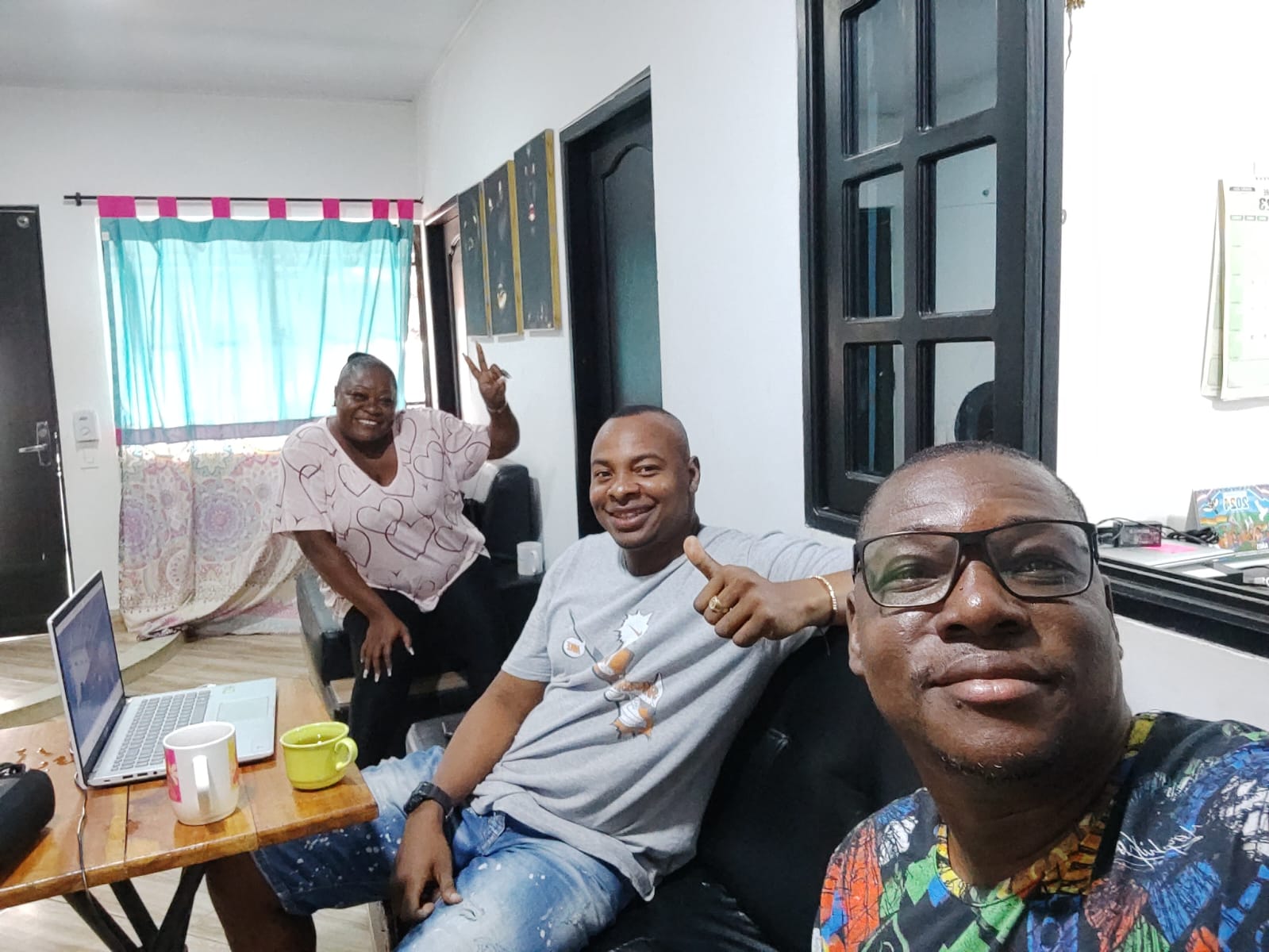
Urabá Sound System collective founders, left to right: , Miladis Córdoba Rivas, Rafael Paz Perea, Willinton Albornoz Quejada. Image: Urabá Sound System
Medellín
A fifty-minute flight from Apartadó, Medellín is the second largest city in Colombia and a main center for commerce and trade. Since the early 2000s it has also established itself as the world capital of reggaeton, which has greatly contributed to shaping the city’s contemporary soundtrack, fashion, and imaginary.
The Medellín screening was hosted in the hall of Teatro Pablo Tobón Uribe, a renowned theatre with a wide-ranging programme, as part of their Sunday series of community and culture talks. We thank Daniel Buitrago, former theatre director, for making it possible.
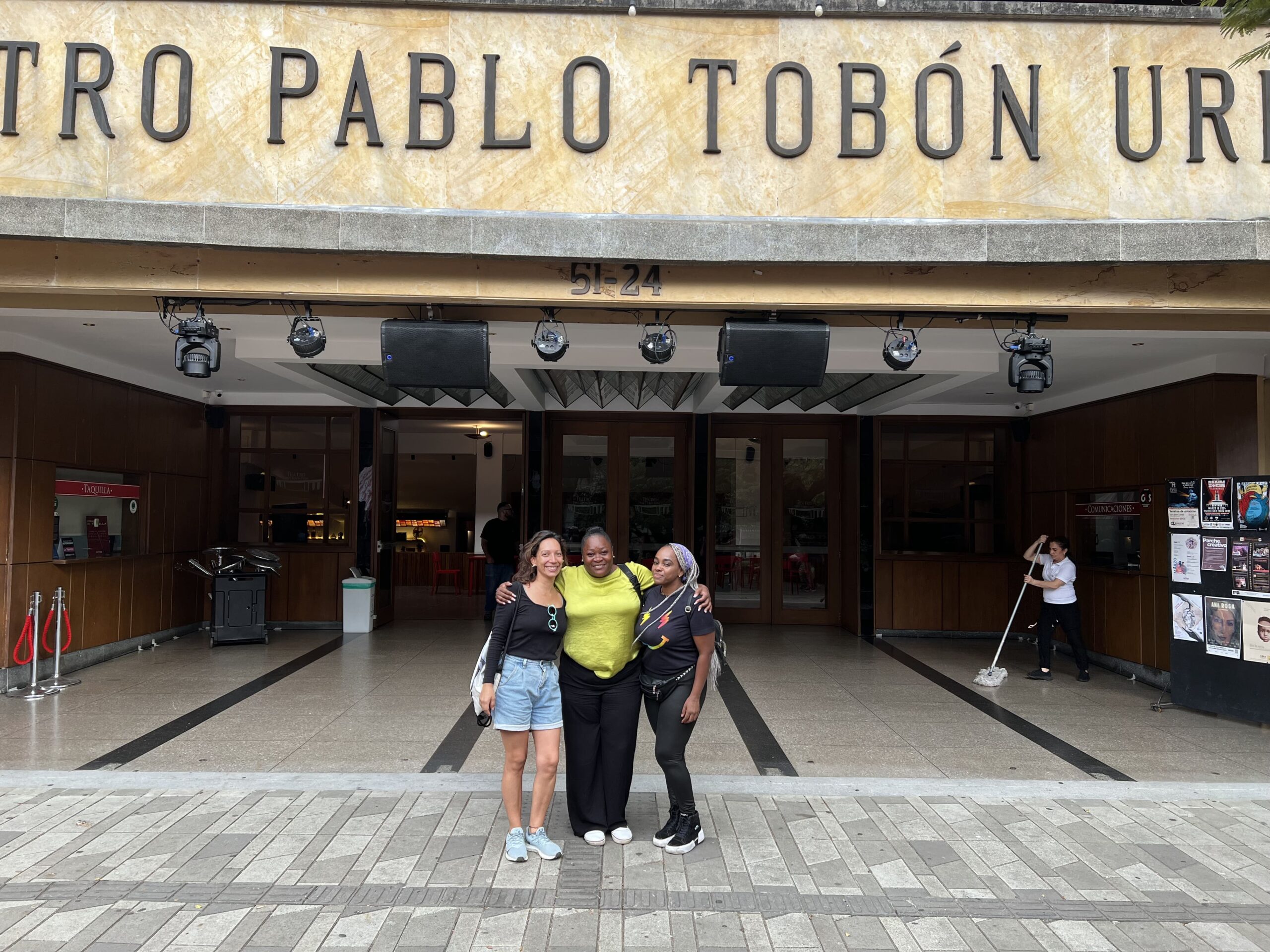
Miladis with two screening attendees in Medellín
The discussion was rich, especially with regards to the social implications of the collective’s work. Influential music collector, curator, and DJ Don Alirio was on the panel emphasizing the role of the picós in building the Colombian popular music archive. The audience included a contingent of the rising Medellín reggae and dub scene. This helped foster a dialogue between two sonic street technologies scenes who do not have an established presence in Medellín yet, mainly due to the supremacy of the reggaeton club scene.
The event had also an added value in the light of the local political history. Since 1905, a significant portion of Urabá, including the cities of Turbo and Apartadó where the collective is based, is part of the Antioquia department, which capital is Medellín. The difference in history, culture, and ethnicity between Urabá and the rest of Antioquia, let alone travel distance from its administrative centre Medellin, has further contributed to the cultural isolation of this Colombian Caribbean region. Therefore, bringing the Black popular culture of the “periphery” to the “centre” in a renowned cultural venue had powerful symbolic implications. Miladis:
I think presenting [the film] in Medellín gives a feeling that it is possible, that we are achieving it, that we are taking actions for the recognition of the picó culture. And picoteros in Urabá, they begin to believe that it is happening, that this is going to happen and that they have support not only from the locale entities, but also from other communities and external groups.
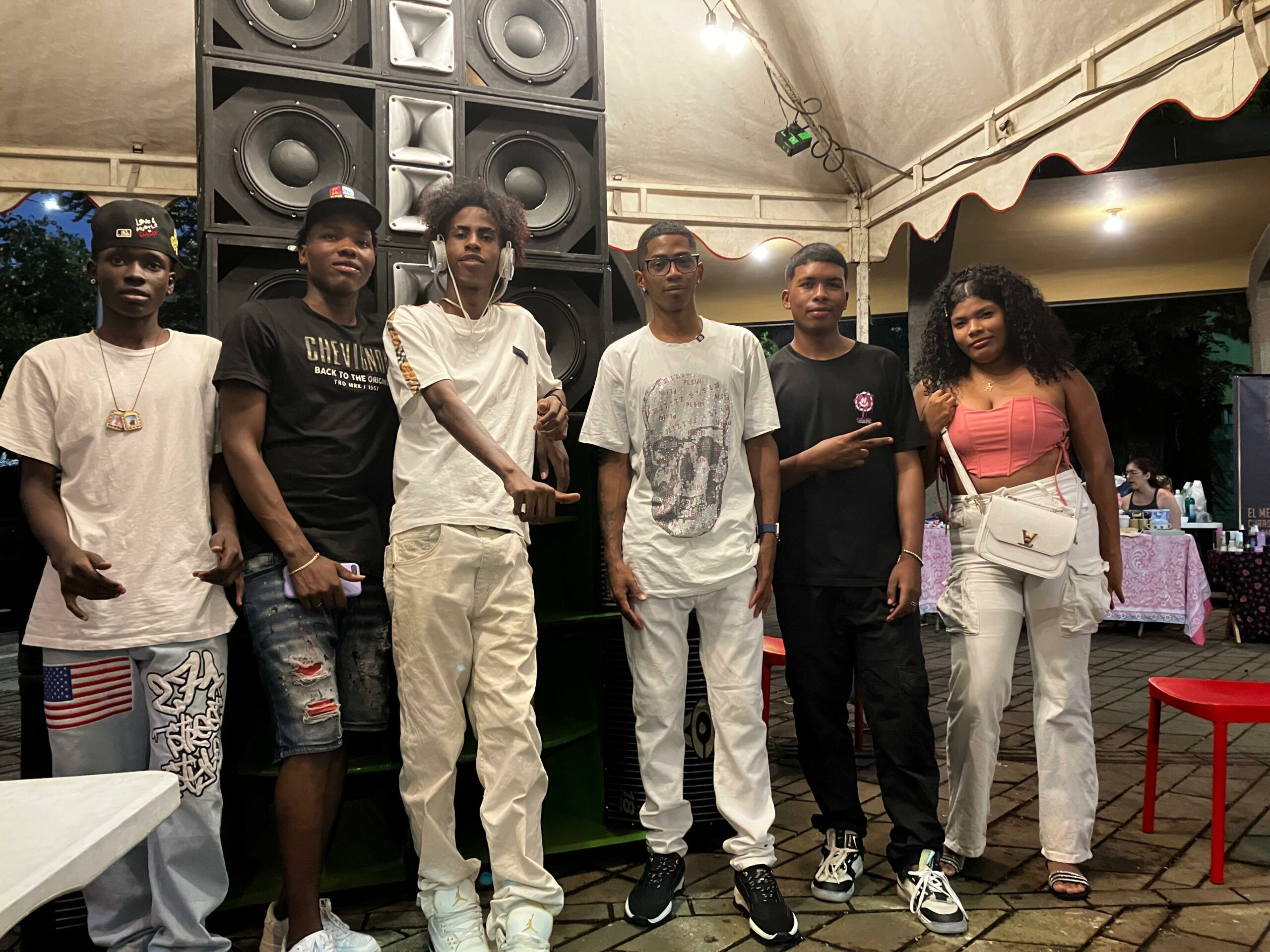
Picó Reggae Music with owners and crew, Medellín. Image: Brian D’Aquino
Such implications were especially appreciated by attendees from the Medellín-based Urabá community. Among them, young crew members of Reggae Music Medellín, the local picó providing outdoor music entertainment. The documentary offered them a chance to discover details of the Urabá sound system history they had never heard before and to feel closer to their own community and culture. Eighteen-year-old DJ Juan Diego:
To be honest, I heard about El Gran Juancho, El Nando, the history… Obviously I cannot say ‘I was there’ as I wasn’t even born at the time, but I was aware of it […] But I never knew that El Juancho ended in a massacre, and the sound system was burned down…
The event ended with Reggae Music Medellín, Musica Para Volar and Medallo Dubwise collectives sharing the controls of the sound system in an inspiring set of mixed Caribbean music despite the rain – hopefully a prelude to future collaborations.
Barranquilla
After a few days of rest the tour continued with two events in Barranquilla. This Caribbean city is, together with Cartagena, the cradle of Colombian picó culture, especially with regards to traditional turbo technology and the vinyl archive (see this blog). Barranquilla is also home to a world-famous Carnival, second only to Rio de Janeiro’s, uniquely granted a double designation as National Patrimony (2001) and UNESCO Intangible Heritage (2003). Local associations have been working towards the patrimonialization of picó culture for a long time, and academic interest is also comparatively strong. Barranquilla therefore had a strategic importance in the ongoing process of connecting Urabá Sound System collective to the existing national network. Willinton:
Being in Barranquilla or in Cartagena means we have the possibility of getting closer to a much larger picotera community, with much more experience, with an academic approach, an historical reflection… which in Urabá we have not been part of.
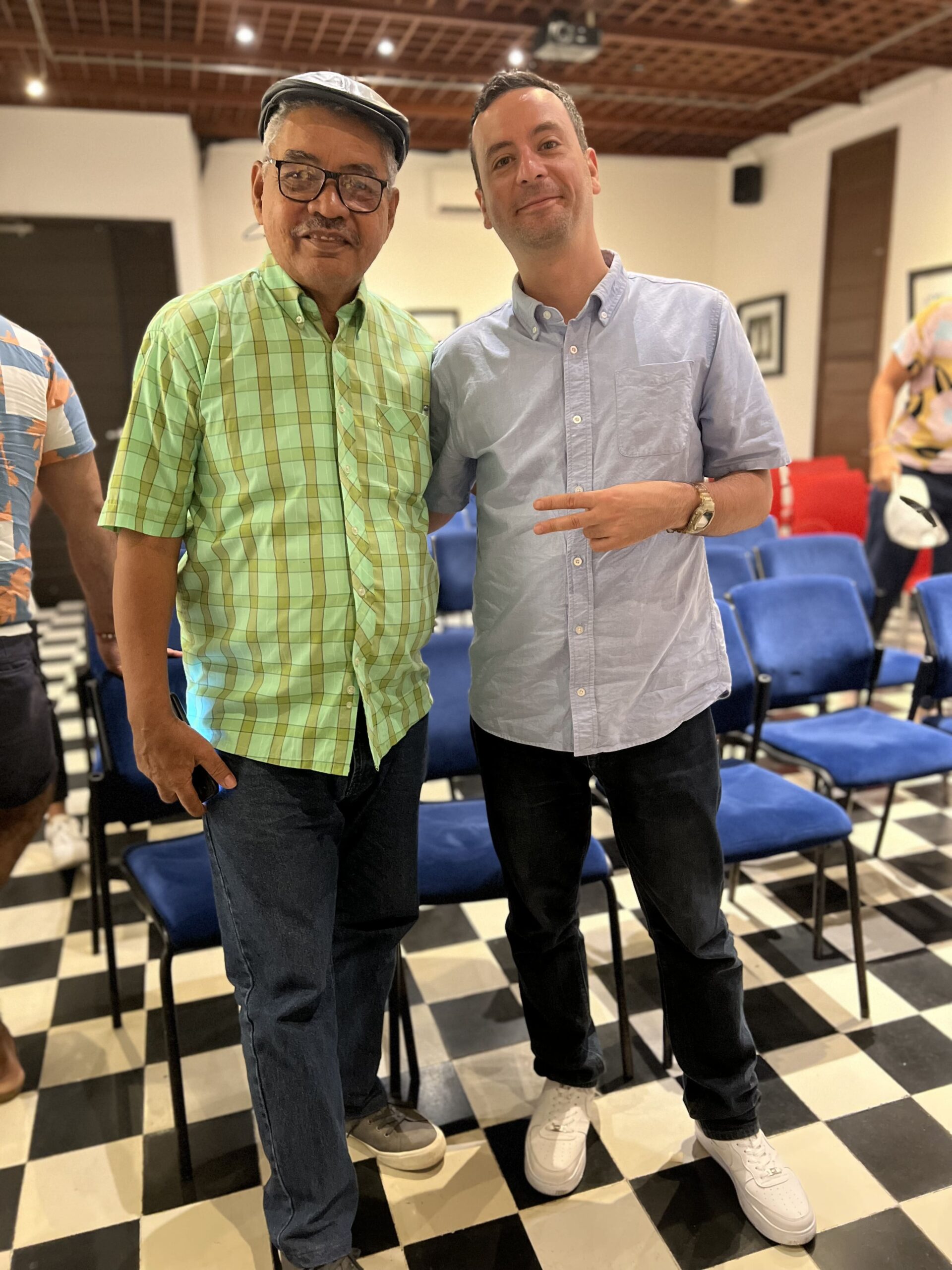
Legendary pico painter Maestro William Guitierrez (left) with the author at La Cueva, Barranquilla
A history spanning eight decades and a population currently over one million accounts for the complex layering of Barranquilla picó culture. Sonando con Proposito was screened in Barranquilla twice, in very different settings. This allowed both the collective and the SST project to grasp more of the nuances of the local scene.
The first event was hosted on Wednesday the 6th of Marchl by the prestigious private university Uninorte, thanks to the interest of the director of the Arts and Culture division Toni Celia Maestre, and a link provided by our research collaborator Edgar Benitez. The screening was held at La Cueva, a renowned cultural venue and former meeting spot for the Barranquilla Group, including Nobel prize Gabriel García Márquez, in the 1950s. The sophisticated audience included music collectors and connoisseurs, as well as maestro William Guitierrez, legendary picó painter whose first ever exhibition was curated by Uninorte in 2023. Being welcomed in such a distinguished space was seen very positively by the collective. Rafa:
It is 100% important that we surround ourselves with all types of people and all types of audiences, because that is what we want to achieve, that our culture is valued by everyone. And that we can be not only in the marginalized neighborhoods, but also here in the centre, in the North of the city, where the so-called high-class people live.
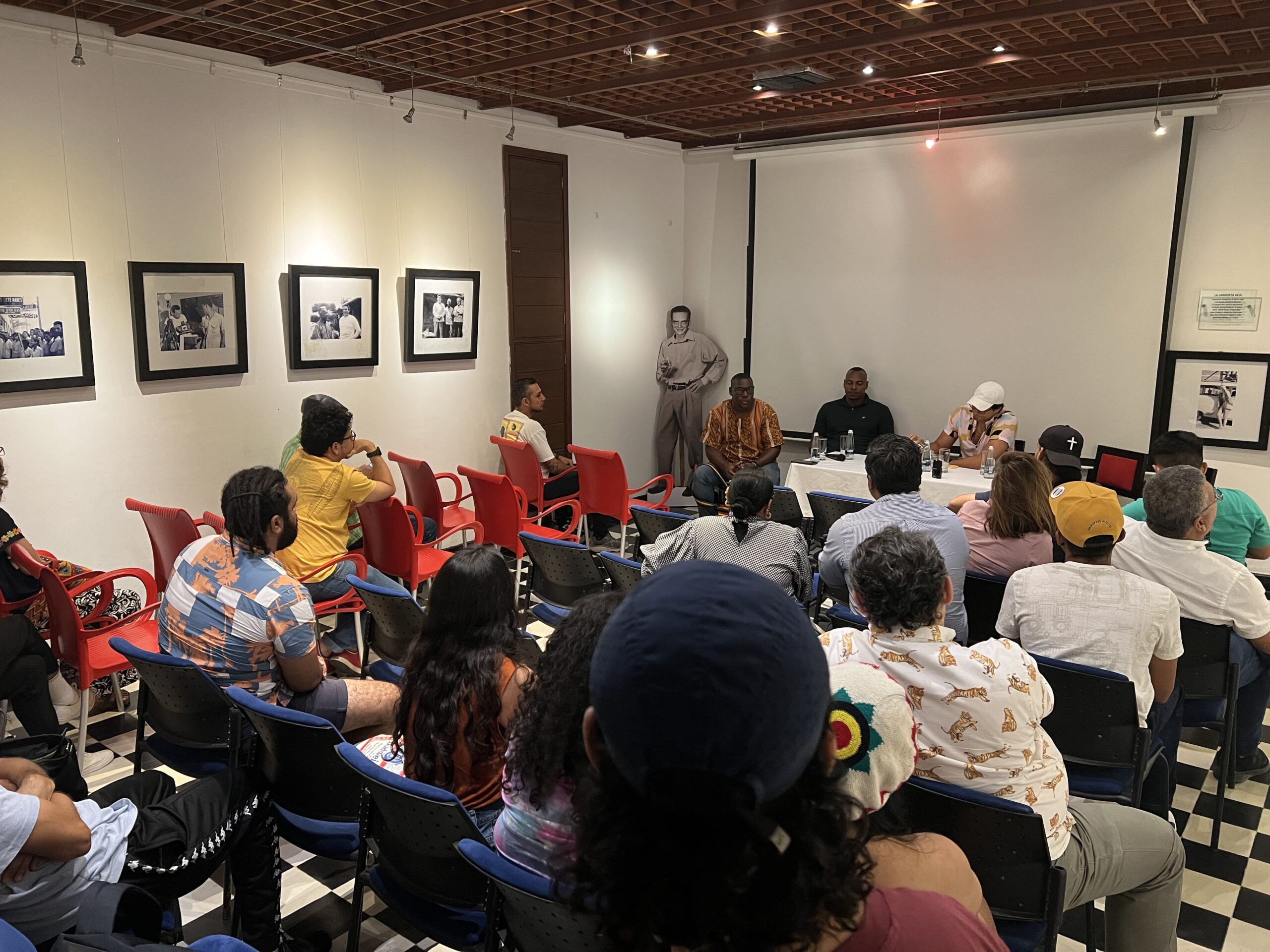
Screening and discussion at La Cueva, Barranquilla
The discussion was centered around the music and technological features of the Urabá scene, completely unknown to most of the audience, with its history and social implications particularly standing out. In fact, most of the audience ignored that Urabá is a Caribbean region, given its political association with Antioquia. Miguel Iriarte, La Cueva director:
The picó in this city [Barranquilla] is a fundamental part of urban culture and popular culture, but I did not know that the pico had such strong social and political implications in Urabá… It was actually primary knowledge.
A second screening event was hosted the next day in southern Barranquilla – with urban geography somehow reflecting the class divide, as I learned. La Estación is an established picotera venue. Ralphy Polo, radio presenter and a major figure on the scene with nearly forty years of cultural activism hosted the event. His voice can also be heard in most of the placas, the pre-recorded jingles punctuating any picó’s music selection. Papa Vengador provided the sound system.
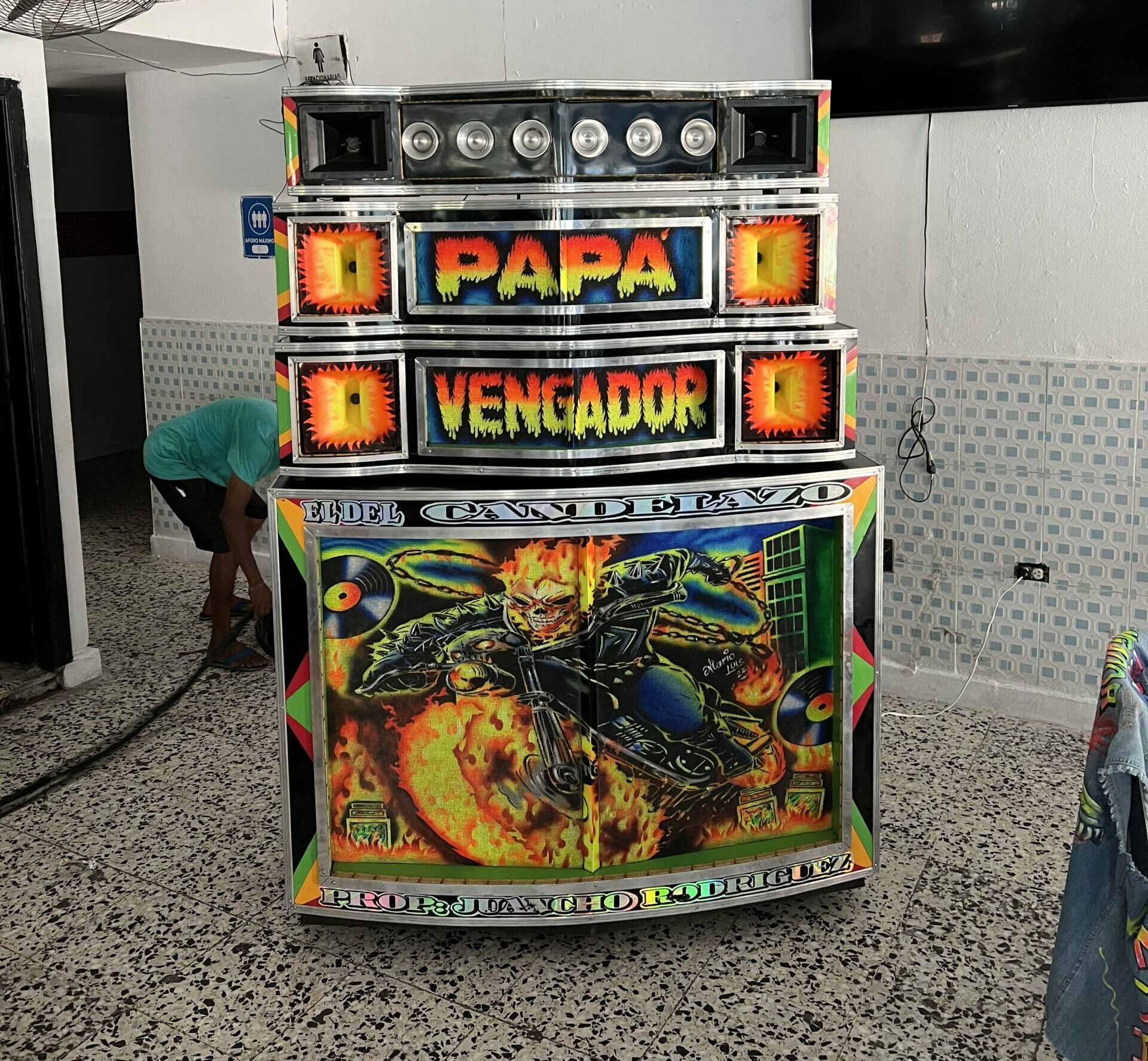
Pico Papa Vengador at La Estacion, Barranquilla
The roundtable included luminaries such as Prof Sadid Ortega and musicologist Manuel Hernandez, as well as major Barranquilla picó owners such as Alex Aleman of El Timbalero. The discussion focused on the ongoing struggle for recognition of picotera culture in Barranquilla with an in-depth historical analysis on the origins of the movement. Prof Ortega dated this back to the early 1940s in Barranquilla’s Barrio Chino.
Overall, existing links between Barranquilla and Urabá seemed to be quite minimal, so these events certainly helped to build bridges with both the North and the South of the city. The absence of a younger audience was quite a striking feature of both events, however, especially at La Estación. This was a big contrast with Urabá where the presence of teenagers and kids was massive. Intergenerational transmission is a key feature for the culture’s survival, and it was surprising that the topic was not addressed at any of the events. [1] Also, it was only at the end of the event at La Estación that we learned by chance that two women who helped with the preparations were themselves picoteras, a rarity in Colombia. Sadly, they were not included in the conversation by their male counterparts.
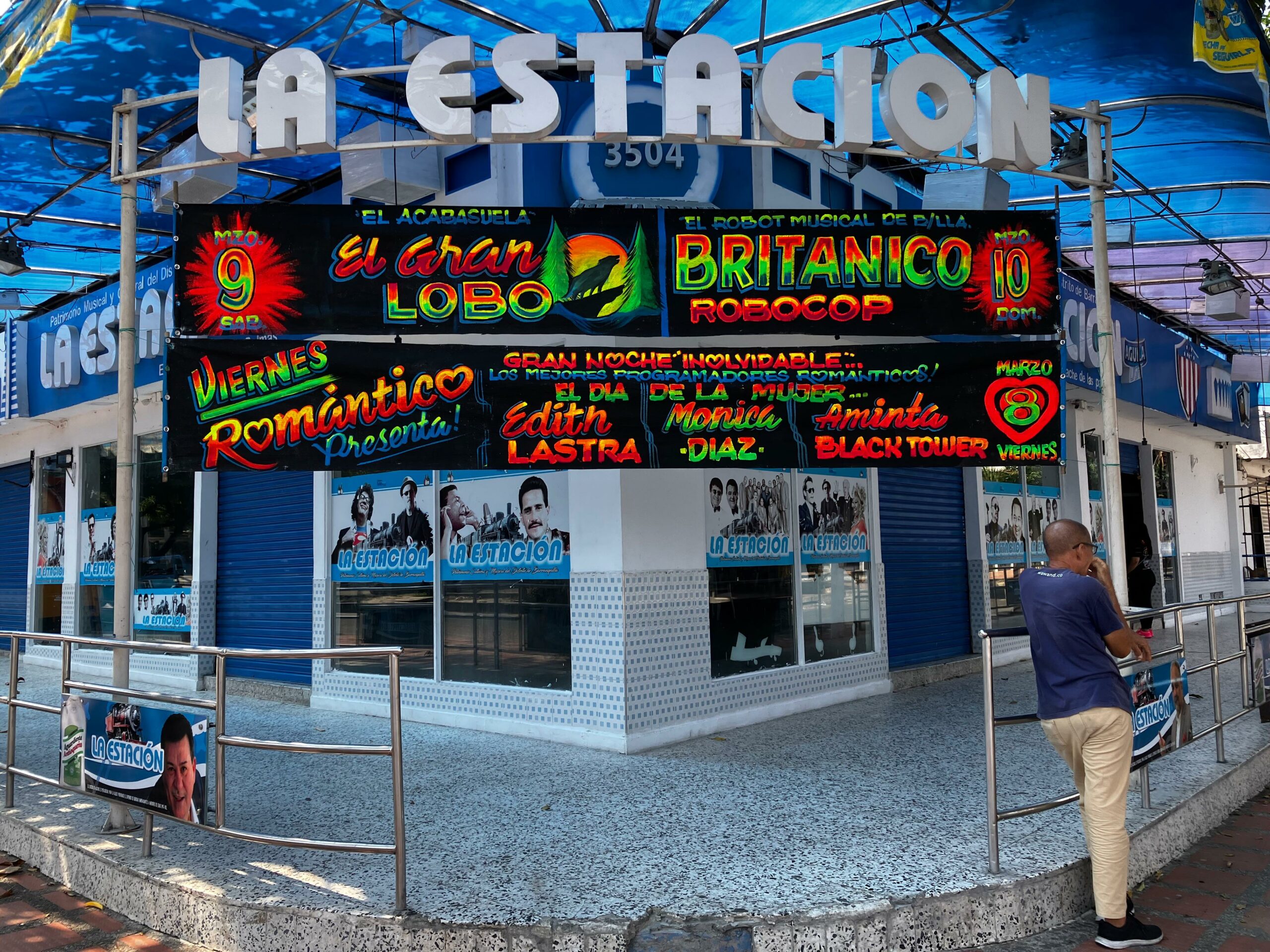
Legendary picotera venue La Estacion, Barranquilla. Image: Brian D’Aquino
Cartagena
Cartagena was the final stop of the tour. This Caribbean city is another site of primary importance for the development of Colombian picó culture, championing the shift from the classic turbo to the contemporary fraccionado sound system format. Even more importantly, it is also the birthplace of champeta, a homegrown music genre favored by the younger crowd. Cartagena has a stronger historical and cultural connection with Turbo than Barranquilla due to the maritime link between the two ports. This also applies to picotera history, with an oral record of sound systems tours and clashes in the 1980s and 90s.
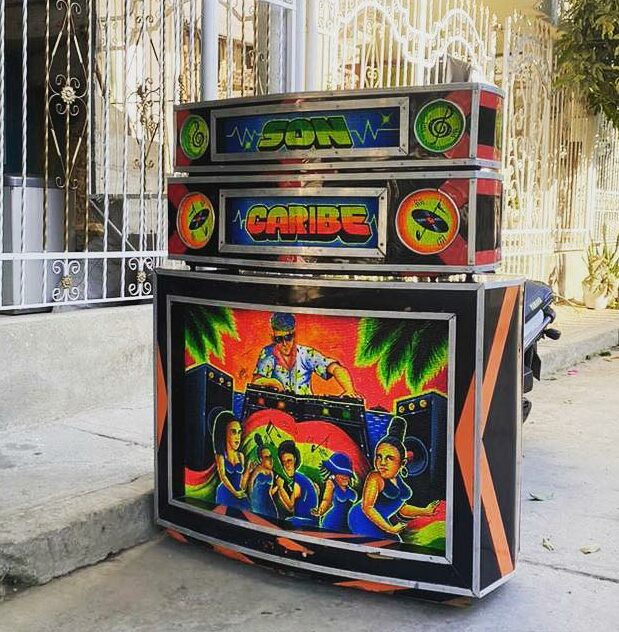
Pico El Son Caribe, Santa Marta, is an example of the turbo sound system format. Image: Brian D’Aquino
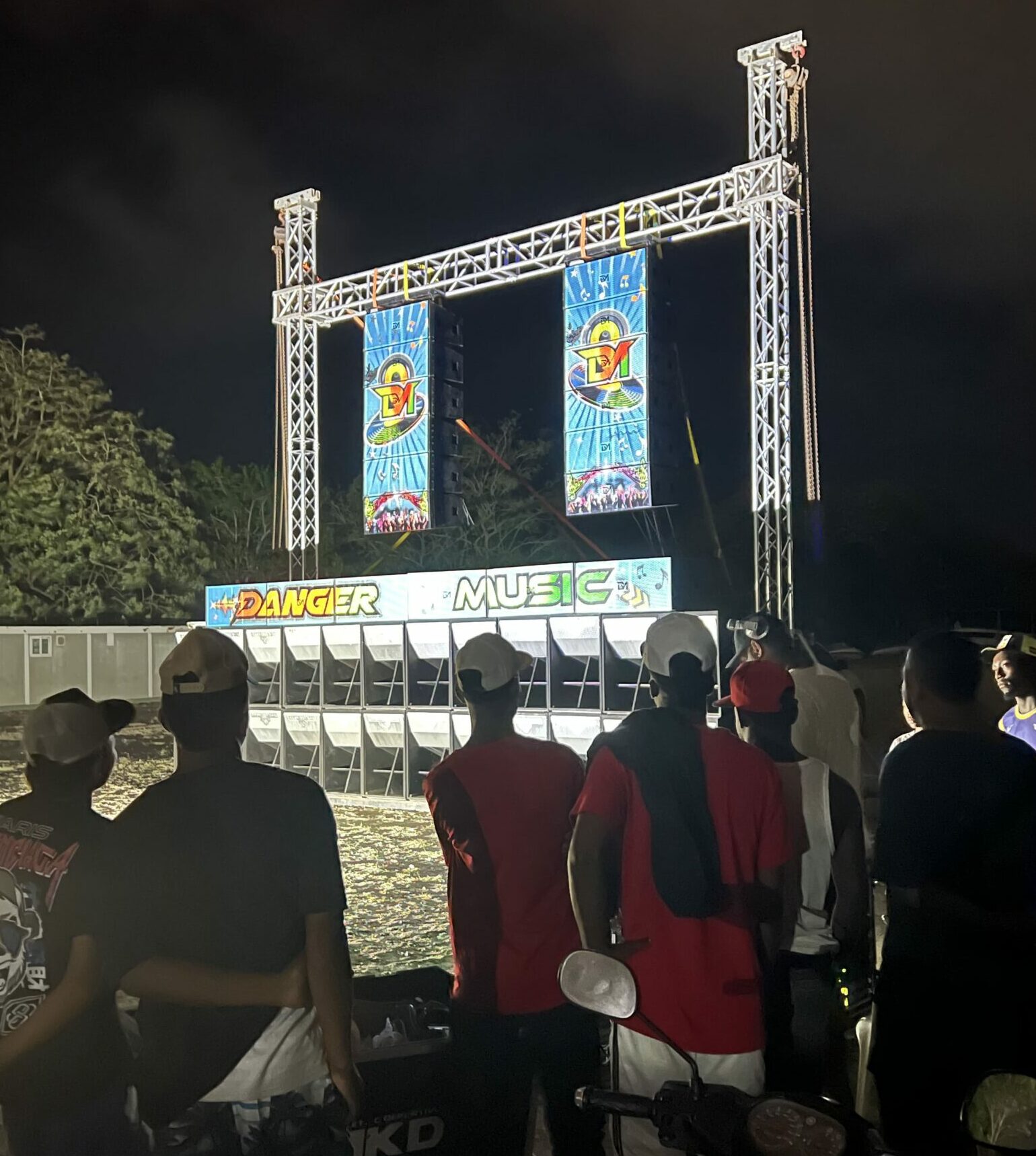
Pico Danger Music from Turbo is an example of the fraccionado sound system format with a modern line array system. Image: Brian D’Aquino
The first event was held at Universidad de Cartagena as part of the course of Media Production for Social Development hosted by prof Carlos Diaz Acevedo. The crowd of undergraduate students was exceptionally receptive and aware of the tensions and contradictions surrounding the street culture, also given their first-hand knowledge of the Cartagena scene. Willinton:
This was perhaps one of the most powerful meetings…. because it allowed us to understand how young people see the process. They are aware of the dynamics of the picotero scene in their region. And they have questions that are challenging… that we could not solve immediately, but we will have to think about…. And they also have proposals.
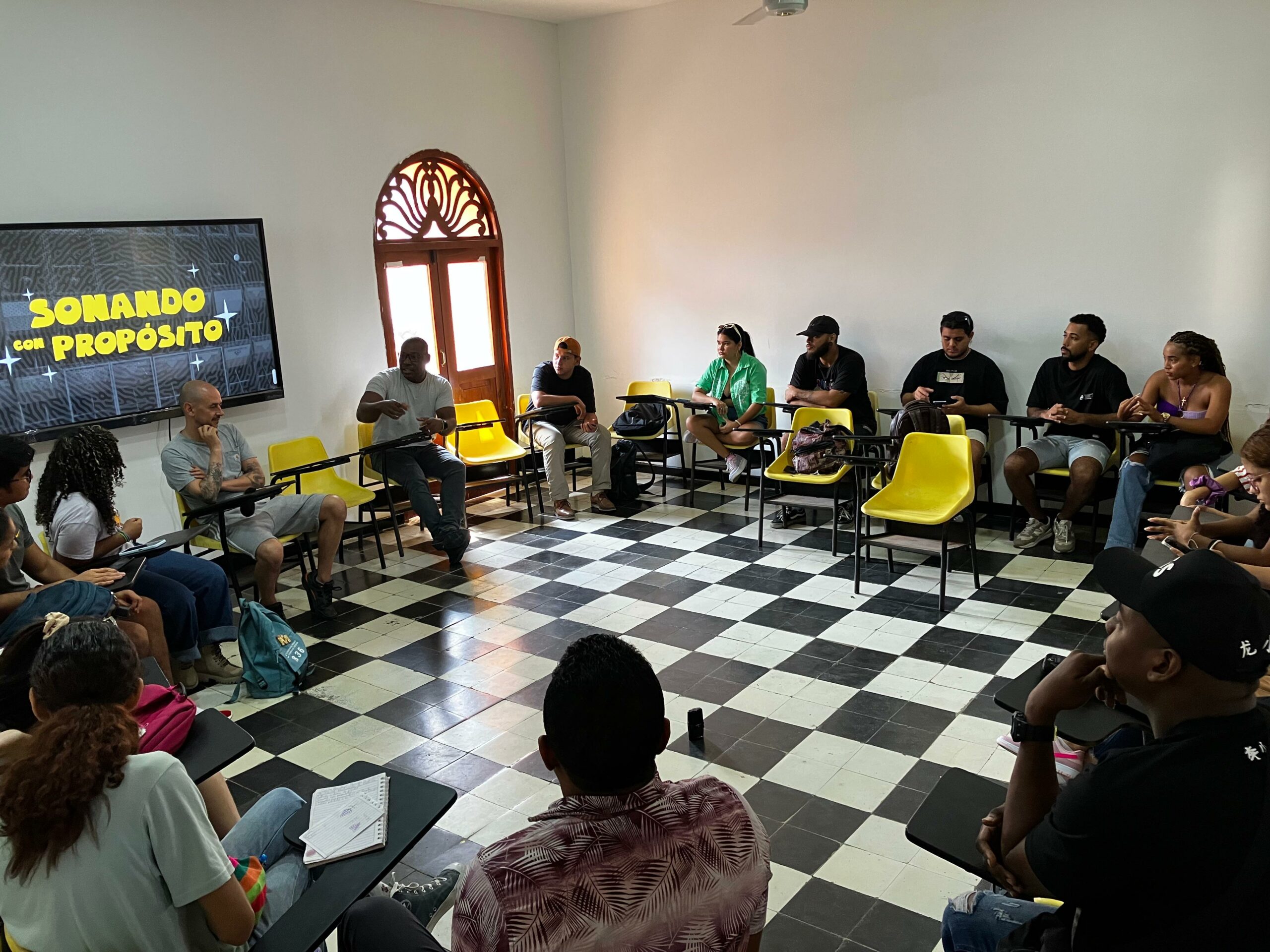
Screening and discussion at University of Cartagena. Image: Brian D’Aquino
The second and final event was held at La Casa Cruxada, an established culture and music venue located in the city centre. Host for the event was author and SST Colombia research collaborator JJ Carbonell who curated the music selection and the list of knowledgeable invitees. These included Luis Chiquillo, president of Asobacar (Associacion de Bailes de Cartagena), responsible for negotiating the issue of music events permits; Luis Arellano, social media creator and picó historian, and Alexander Bonilla, music promoter of Reggae Colombia. The event was conceived more as an open discussion among peers sharing their specialist knowledge rather than a public debate. This resulted in an in-depth conversation spanning over several hours. Rafael:
That meeting had more intimacy. It was like sharing a space with friends, none of whom I knew, but I felt like there was an old friendship. We sat in a circle, we started to talk, and the talk lasted for more than two hours… We talked about culture, we talked about violence, we talked about history…
The discussion was also able to shed light on a few episodes of the Cartagena-Urabá picotera connection that to date have remained a mystery. Luis Arellano planned to interview the collective for his own channel El Papo del 7 to clarify some of these historical disputes. Willinton:
The event helped to build a connection between cities that were somehow connected in the past… There has been a dialogue, but that dialogue has not been in depth, more through particular events when sound systems from Urabá met those from Cartagena… But I think that from this conversation we can make a much more solid fabric.
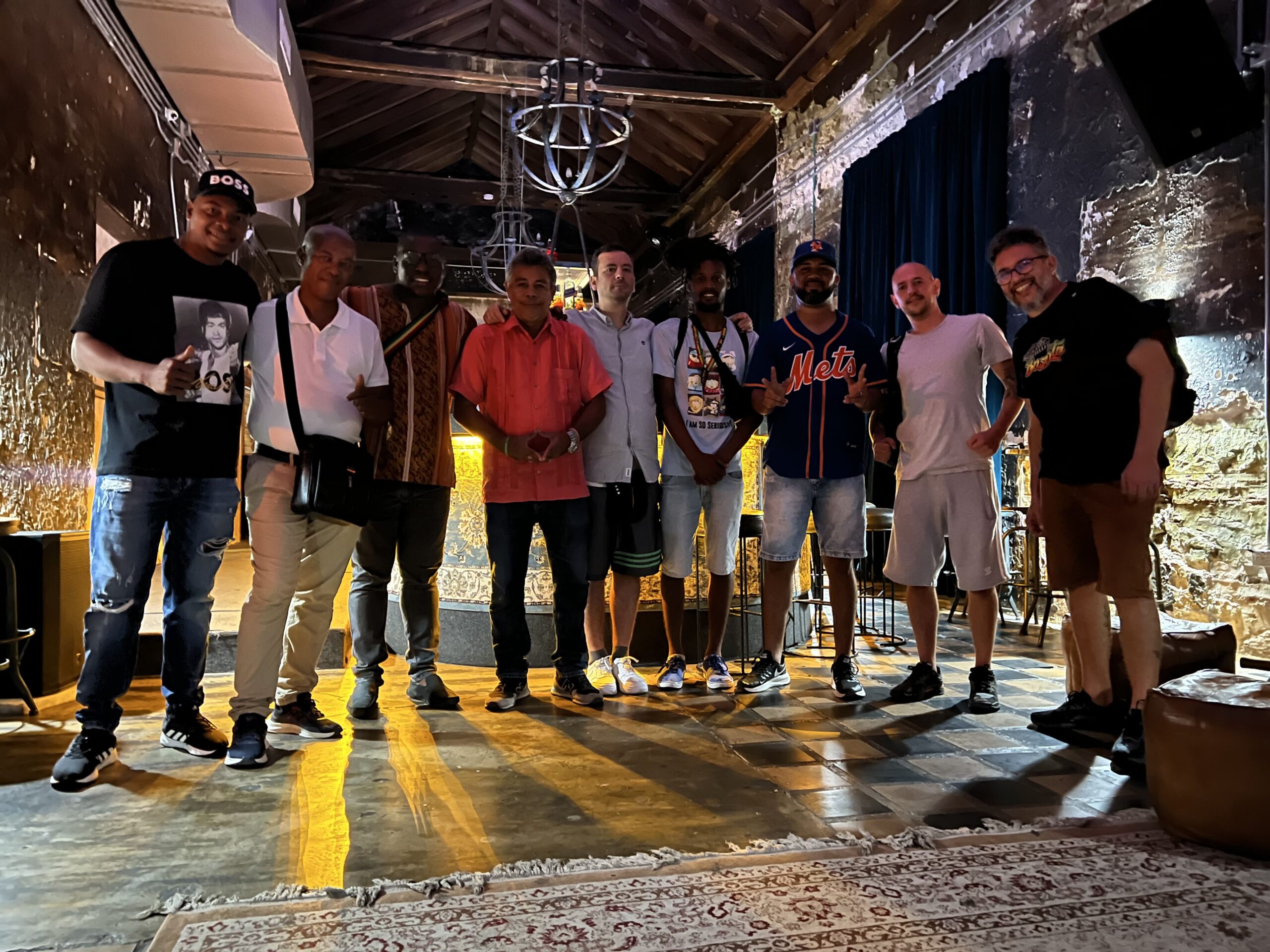
Group picture with participants after the screening at La Casa Cruxada, Cartagena
What emerged clearly from the discussion was the differences in the way the culture is lived by its practitioners and perceived by the supporters. Again, the social and political implications of the Urabá scene impressed other participants. Willinton:
It was interesting how they recognized that [in Cartagena] the cultural component has somehow weakened, and that [the dances] are more business oriented. They also recognize that they are not united, that each party works on its own.
Conclusions
These two weeks spent on the road with the Urabá Sound System collective premiering the research documentary Sonando con Proposito certainly fulfilled the ambitions of the impact project. The screening and discussion tour enabled the collective to boost their profile, widen their network, engage with established practitioners and cultural activists, and consolidate their local achievements.
At the same time, the tour provided the SST project with a unique opportunity to delve deeper into the nuances of the popular culture of Colombian picós, whose incredibly rich history is a testament to sonic street technologies’ viability and complexity, not to mention its political and social ramifications. Lastly, it allowed me to get to know better Miladis, Willinton and Rafa. I’m happy to say that I have learned a lot from the precious time spent together with these incredibly strong human beings who have generously introduced me to a unique history of music, technology, culture, community and resilience.
Notes
[1] The need for intergenerational transmission was at the centre of the discussion between sound system owners at SSO#8, as pictured in the research film UK Generation 2 Generation.
About the author
Brian D’Aquino is Senior Research Assistant for the SST project. He is a researcher, sound system practitioner and music producer.
